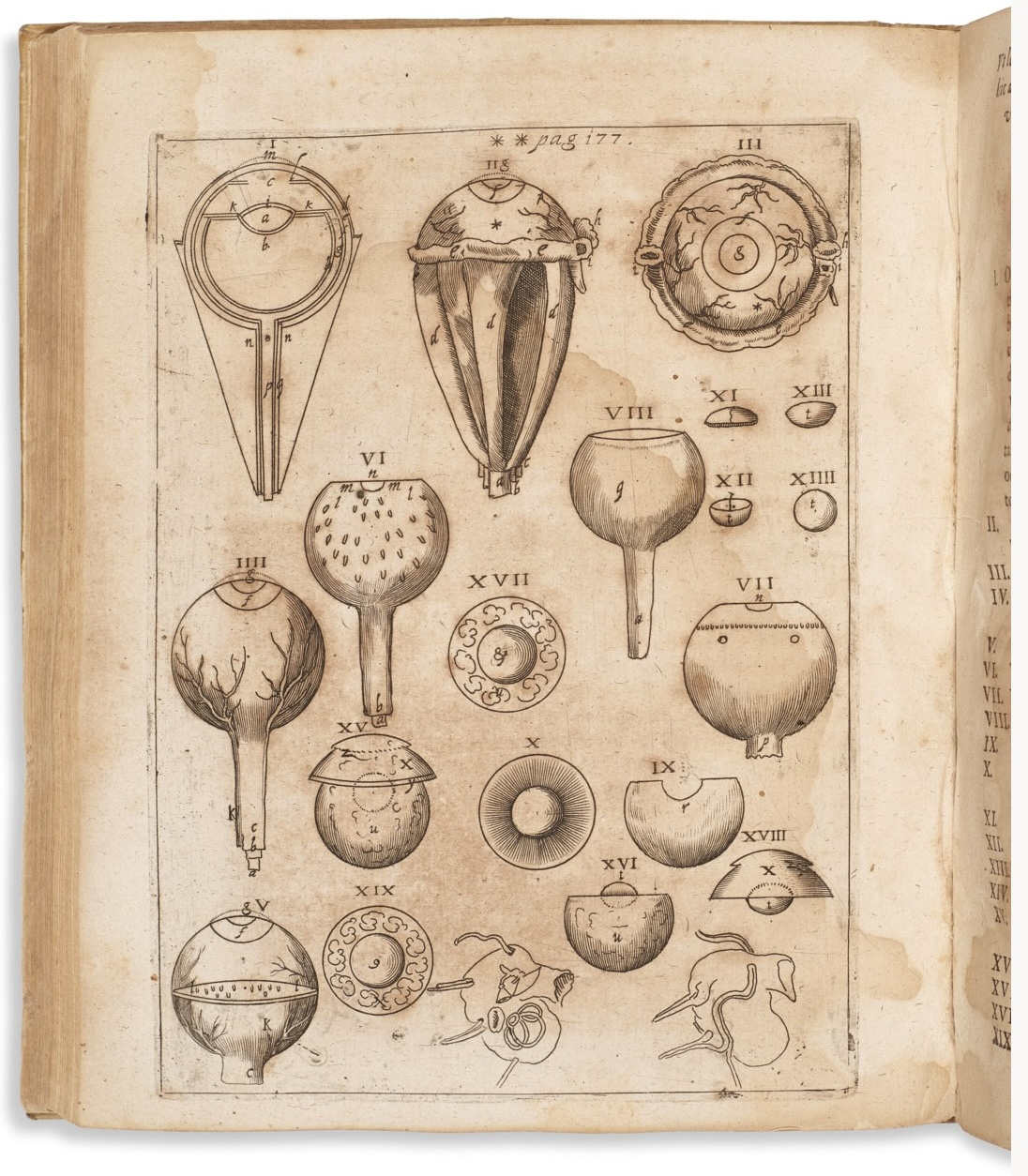The Ends of Vision

A set of two panels exploring historical crises in seeing as a means to explore the longer histories of vision.
New technologies are unsettling the stability of our visual experience. They are introducing a fresh set of doubts about how we interpret the images and the objects that we see. At the same time we are frequently told - by popular media and critical writing - that we live in a world more saturated with imagery than in previous generations. How are we to grapple with these two phenomena? Are we experiencing a major historical break in how we think about images and objects, what they tell us and the role of seeing in society?
A crisis of vision is not a new idea - it has been grappled with over many cultures and many centuries, yet each iteration is different, informed by changes in technology, scientific discoveries, socio-cultural shifts, politics, religion and so on.
Over the course of two panels we will offer a trans-historical view of the idea of the ends of vision. We will consider 'crises in seeing' as a means to explore the longer histories of vision – understood not as something universal, unchanging or natural, but rather as a crucial site of historical and political contestation.
This panel is part of a multi-year initiative by the Power Institute to examine Visual Understanding, moving from research on the history and theory of art into examining the cultures of seeing in media, science and examining how technology mediates our gaze in the digital world.
The panels are convened by Nick Croggon and Katrina Grant, as part of the AAANZ's 2025 Conference "Unruly Objects", hosted by The Lawrence Wilson Art Gallery, The Berndt Museum, and the University of Western Australia's School of Design, and supported by its Institute of Advanced Studies.
Panel 1
Katrina Grant, Power Institute, The University of Sydney
“The anxiety of illusion in early modern Europe”
The use of visual techniques to create optical illusions in early modern European art is well documented. The rise of interest in illusion is explained by a range major shifts that happened in this period in Europe, the rise of the science 'optics' discussed by philosophers, an interest in control of vision by people in power (the church, rulers of cities and states) and the religious schisms between Catholics and Protestants. The use of illusion is typically discussed either in terms of entertainment or control of the viewer. This paper will examine the way in which anxiety about how vision worked was a key focus on many responses to art in this period. I will consider how a deeper understanding of broader debates about vision can offer insights into visual culture with a particular focus on two areas: visual spectacle and illusion (the tricking of the eye and the mind) and how these were connected to the visual culture of natural philosophy and science (examining whether visual perception could provide evidence and expand knowledge).
Sushma Griffin, Nanyang Technological University
"Beyond Photography’s Totalising Discourses of Modernity”
This paper locates notions of crisis in the totalising tendencies of Euro-American discourses of modernity relating to the introduction of nineteenth-century visual technologies such as photography and stereoscopy. These discourses largely focus on abstraction and control produced by nascent capitalism, colonialism, and industrialism. Jonathan Crary, in his seminal volume Techniques of the Observer, anchors the appearance of the modern subject to the physiological concept of the visual, whereas Zahid Chaudhary’s Afterimage of Empire reveals how aesthetic experimentation in colonial photography led to perceptual transformations. Although, these accounts affiliate the Kantian tradition of disinterested judgement with Marxist ideas of alienation, they ultimately identify with the productive exigencies of economic modernity. This paper, instead, unfolds expansive ways of thinking about photography and other visual technologies in dialogue with philosophical and conceptual lineages of non-western traditions, alternative to discourses of modernity that create “terrors intrinsic to sight” (with a nod to Hal Foster). An example would be the visual tradition of darśan gazing which re-introduces notions of tactility to vision through the apprehension of a photograph of a sacred landscape or deity. To the Indian public, photography was not an alienating medium and its positive reception has implications for the construction of modern subjectivity. I will also speak to Norman Bryson’s explications of the Ch’an tradition in which the gaze is not regarded as a menace, but instead the viewer is decentred, existing “through the existence of everything else in the universal field” and not through the subject-object divide of Cartesian dualism.
Callum Gallagher, University of Sydney
“Re-Visioning an (Un) Australian Fairytale: the art of Ida Outhwaite”
Traditional accounts of nineteenth and early twentieth Australian art history have centred a select group of settler male landscape painters, credited with creating a national school of painting, to the extent that that alternative ways of envisioning a nationalistic landscape at the time have been obscured. However, by placing illustrator Ida Rentoul Outhwaite within a genealogy of nineteenth century Symbolist landscape painting an alternative, richer vision emerges – one that foregrounds the continuing crisis of picturing a nationalised Australian landscape.
Through her work on children’s illustrated gift books, Outhwaite created an alternative way of viewing the Australian landscape that re-centres settler-colonial women and children within a patriarchal nationalism. Still taking the Australian landscape as her subject, Outhwaite’s decorative illustrative approach re-prioritises settler-colonial vision. In place of the expansiveness of a successfully pastoralised landscape, Outhwaite directs the viewer’s eye to an excess of detailed flora and fauna rendered on a smaller scale, depicting a proximity and intimacy of relationships between her young settler protagonists and the landscape. Thus, the Australian arcadian pastoral re-emerges as an Australian fairyland.
However, just as the visualisation of an Arcadian pastoral nation by settler-colonial painters is premised upon the erasure of First Nations peoples and meanings from the landscape, so too is Outhwaite’s image of an antipodean fairyland. In her combination of nineteenth century European fairytale imagery with native Australian flora and fauna Outhwaite reproduces the visual hegemony of the settler-colonial project by imaginatively terraforming an unfamiliar landscape into a new home.
Panel 2
Associate Professor Donna West Brett, University of Sydney
“Enemy Activities: Stasi Surveillance Photographs”
In the late 1980s, the GDR Ministry for State Security (Stasi) established a training manual titled On Requirements and Ways of Developing Operationally Meaningful Photos in the Observation Process. It set out imperatives for mass observation and the management of relevant materials in preparation for criminal proceedings and lawful examination. The requirements for surveillance photography were set against the background of related enemy activity and attacks, such as the intensification of political-ideological activities, political tourism, underground activities, or economic interference. Given the significance of the undertaking, it is not surprising that the report placed particular importance on the photographic record, which provides indelible confirmation of suspect activities.
Surveillance records vary according to how agents interpret the Stasi’s directives and apply the skills they acquired during their training. Foregrounding the photograph as a problematic evidentiary record, subject to failure, this paper considers a range of observations, from the public sphere to the privacy of the home. Citizen perception of the always watching eye of the Stasi created a crisis in seeing, compounded by changing camera and film technology, and the ways in which Ministry directives to counter “enemy activities” shaped surveillance practices.
Dr Ann Stephen, University of Sydney
“Dead white males on the crisis in ‘Western’ vision”
To examine a three-way dialogue between artist-writers across Australian East Coast and North American West Coast avant-garde: namely Ian Burn, Ken Coutts-Smith and Allan Sekula. From the early 1970s on, they rejected the contemporary currents of post-modernism, and in their art and writing focused on the degeneration of late modernist vision. Coutts-Smith was the first to use the concept of appropriation to pinpoint the unequal exchange on the frontiers of modernism. Sekula and Coutts-Smith delivered major lectures in Australia in 1980, Sekula on ‘The Traffic in Photography’ and Coutts-Smith on ‘The demise of the avant-garde’. In 1981 Burn wrote an obit on the 1960s, subtitled ‘Crisis and aftermath’. These overlapping projects were prescient in analysing ‘Western vision’ as it confronted uncertainty, doubt and disturbance, haunted by avant-garde strategies.
Associate Professor Stephen Gilchrist, University of WA
“Envisioning and Safeguarding Indigenous Futures”
The value of Indigenous artistic practice lies in its profound connection to ancient ancestral traditions, but to locate Indigenous peoples and their practices wholly in the past is to deny us a future. Nonetheless, Indigenous art and cultures have always gestured to the future, with historical crises often driving the urgent need to protect Indigenous systems of knowledge for future generations. In 1945 at Birrundudu station, a group of 16 Senior Men from across Desert homelands were commissioned by Ronald and Catherine Berndt to use wax crayon on brown paper to create drawings that depict their cultural understanding of land, ceremonies, and their direct experiences of the brutality of pastoralism. The reemergence of these drawings after decades stored at the Berndt Museum at UWA presents an important cultural opportunity to reclaim ancestral legacies, learn new social histories, forge new futures for contemporary communities, and explore different Indigenous museological approaches. The Birrundudu Drawings are an extraordinary archive of Indigenous knowledge, and their exhibition in 2026, and the consultations that shaped it, breathe life, story, song, place, and ceremony back into these 800 sheets of paper.
